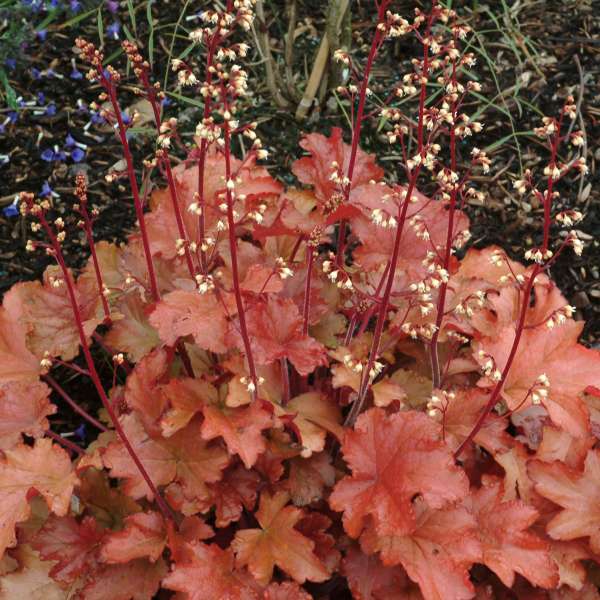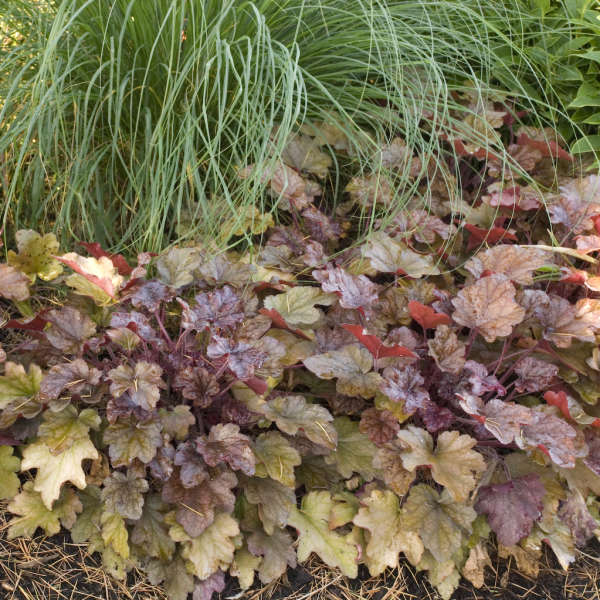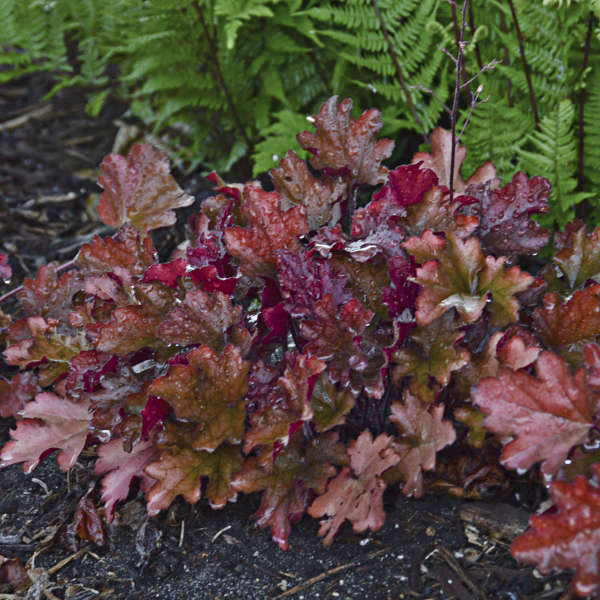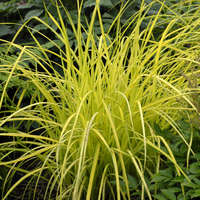Heuchera 'Peach Flambé' PP17195 COPF
Common Name: Coral Bells
Get out your sunglasses! This heuchera literally GLOWS bright peach in spring in summer before turning plum-purple in winter. The leaves are also infused with flaming red, hence its common name. This selection differs from 'Marmalade' and 'Amber Waves' by having larger, smoother, more brightly colored leaves. It grows vigorously into a medium-sized plant. White flowers are produced in spring. 'Peach Flambe' PP17195 is a versatile heuchera; it looks great both in the garden and in combination container plantings.
Coral bells are easy to grow and blend easily with most other perennials in the landscape. Because of their low, mounding habit, they are often used as edging along paths or in containers.



